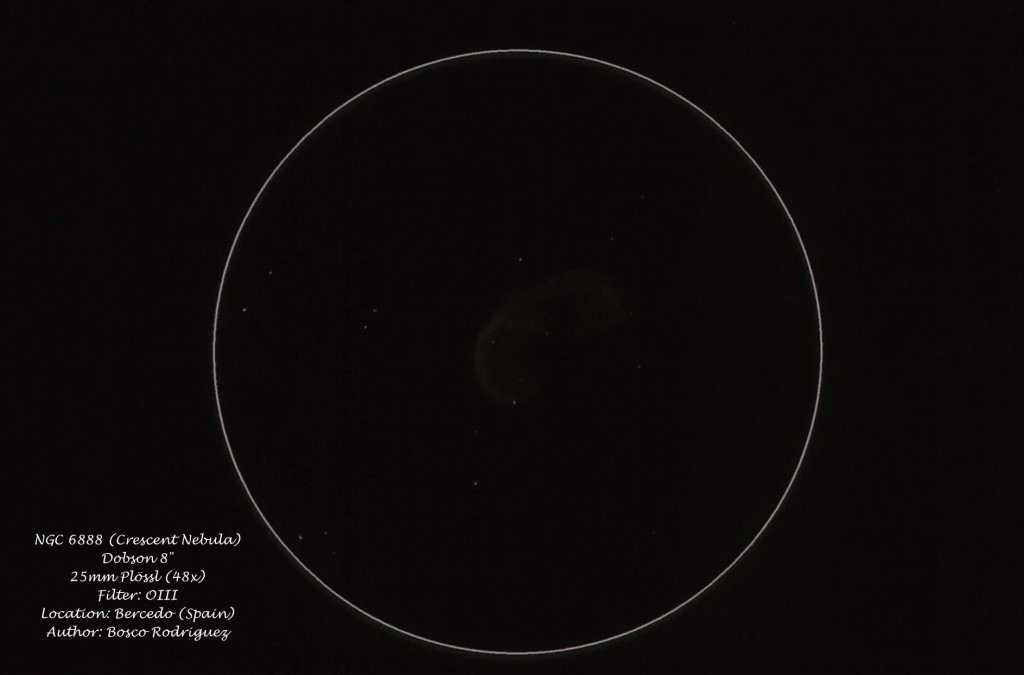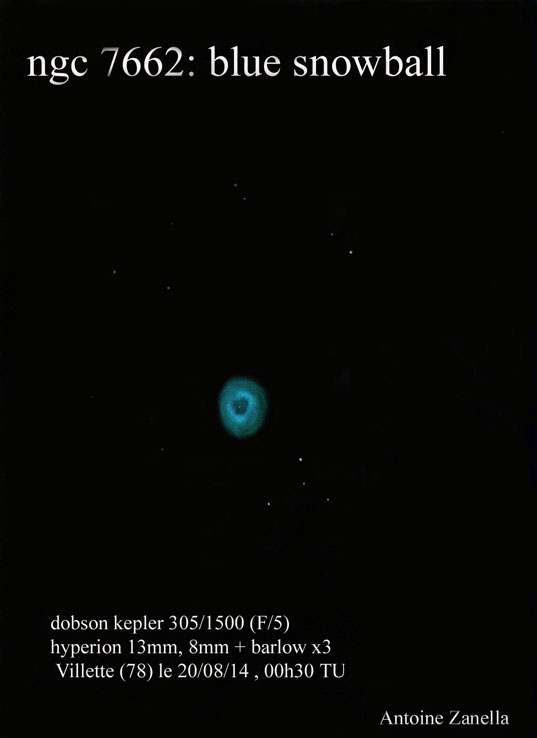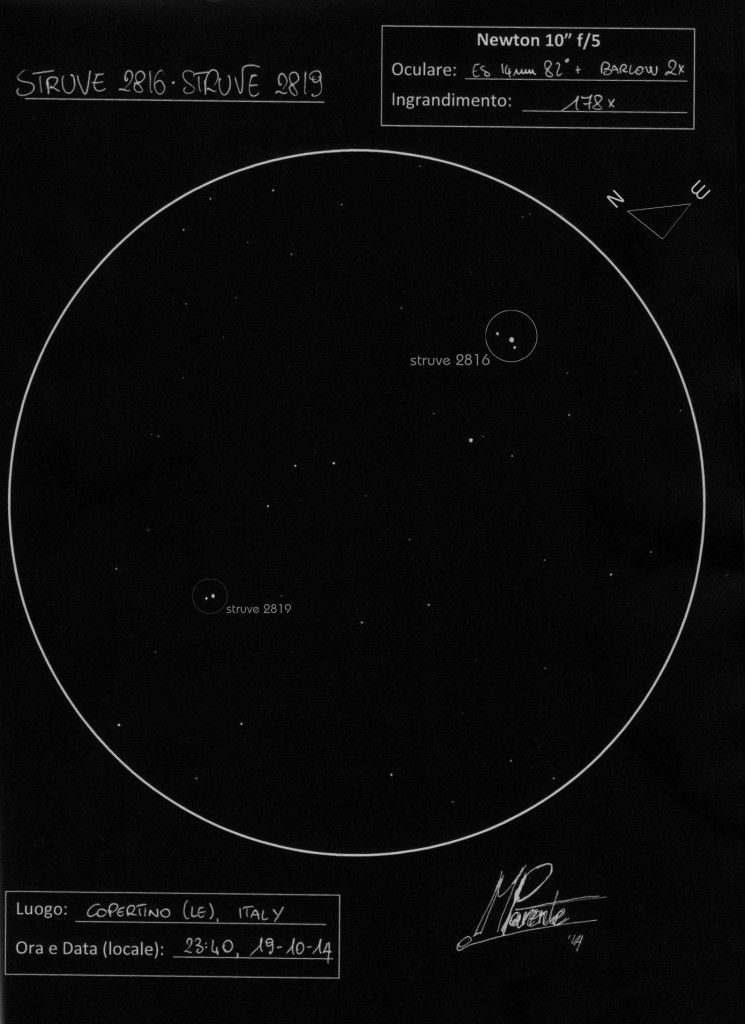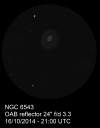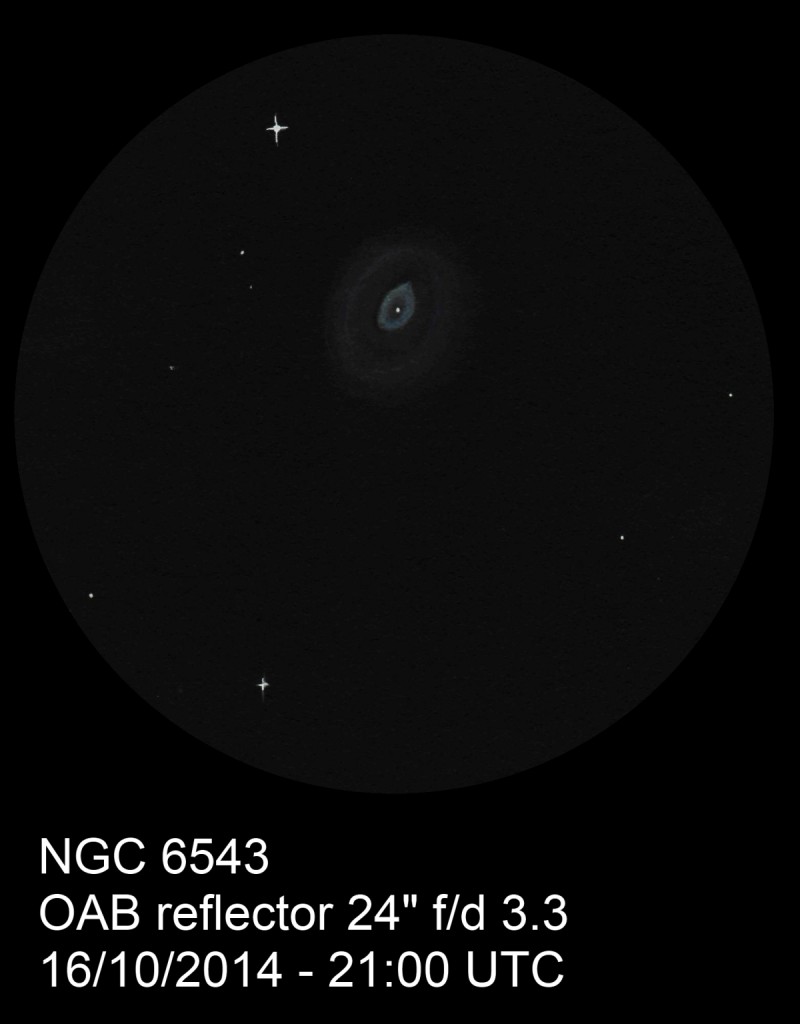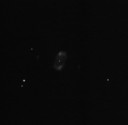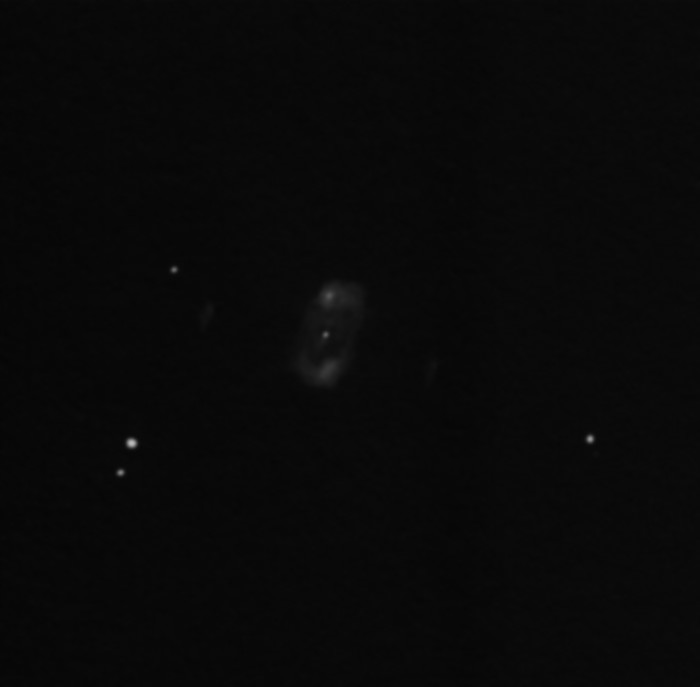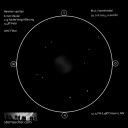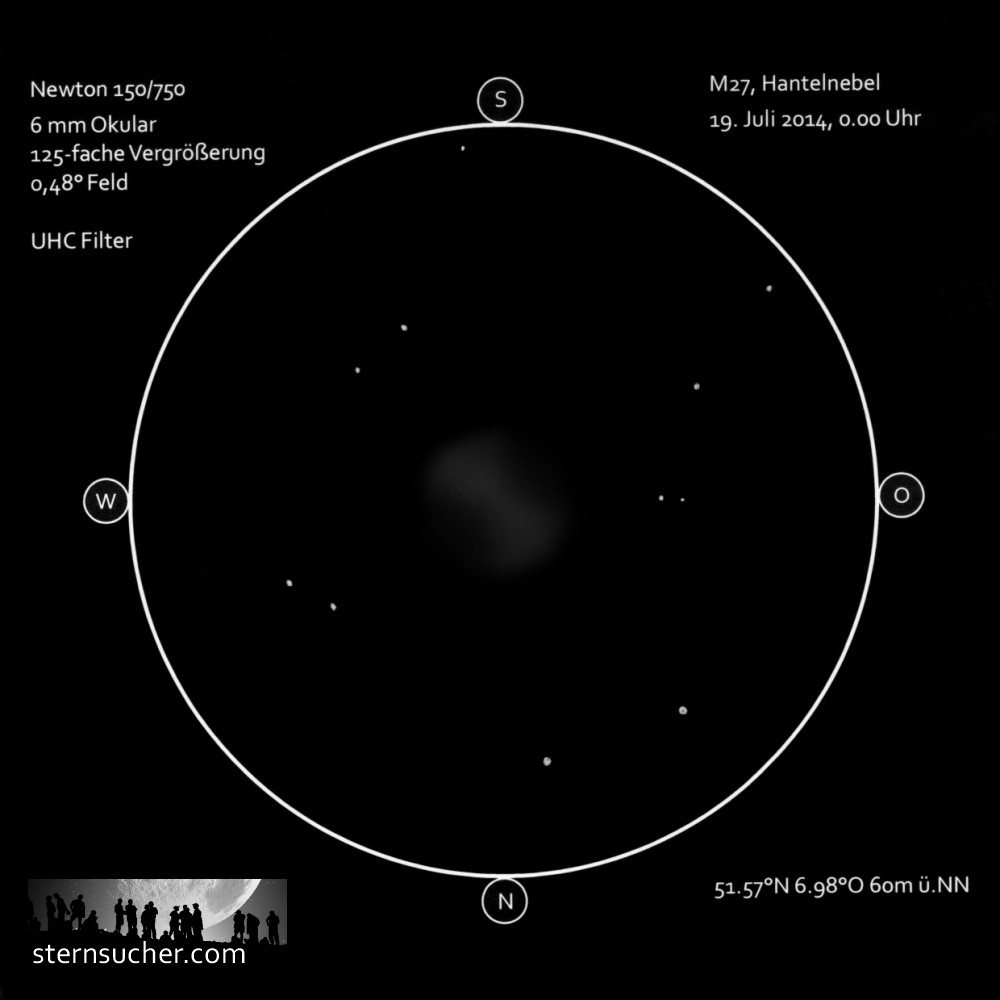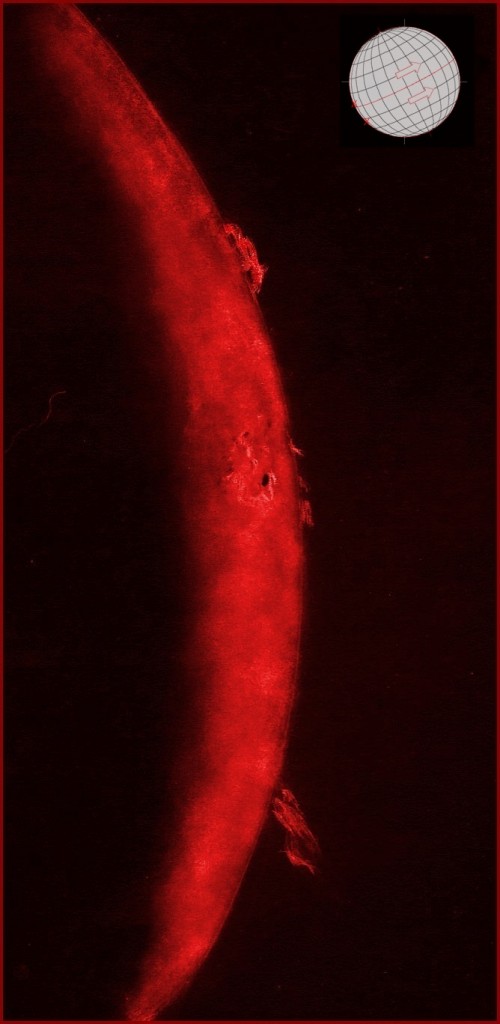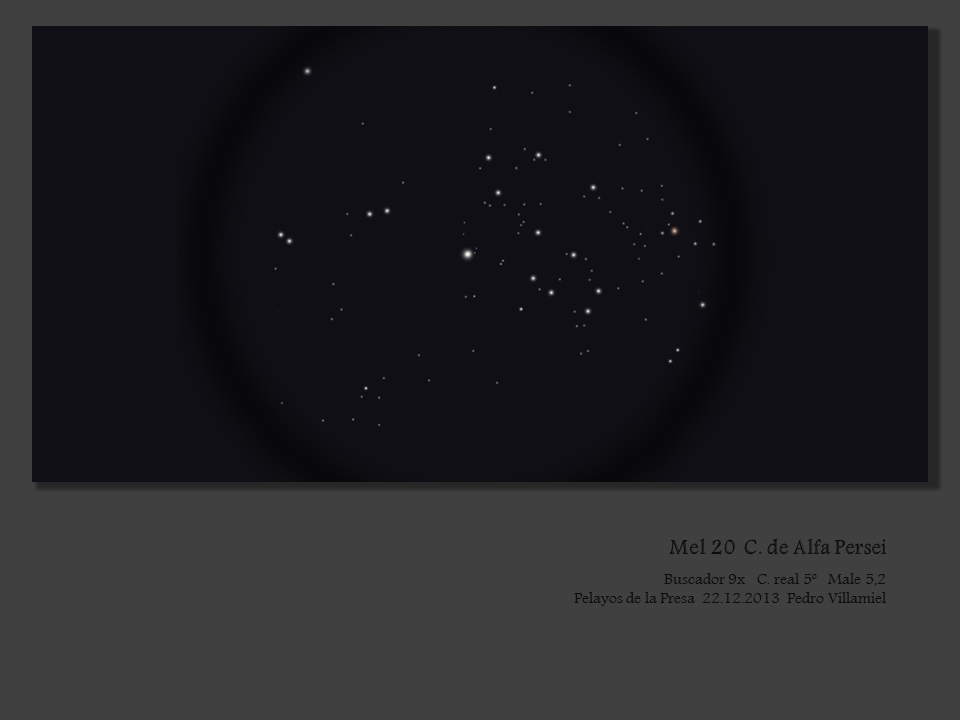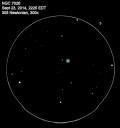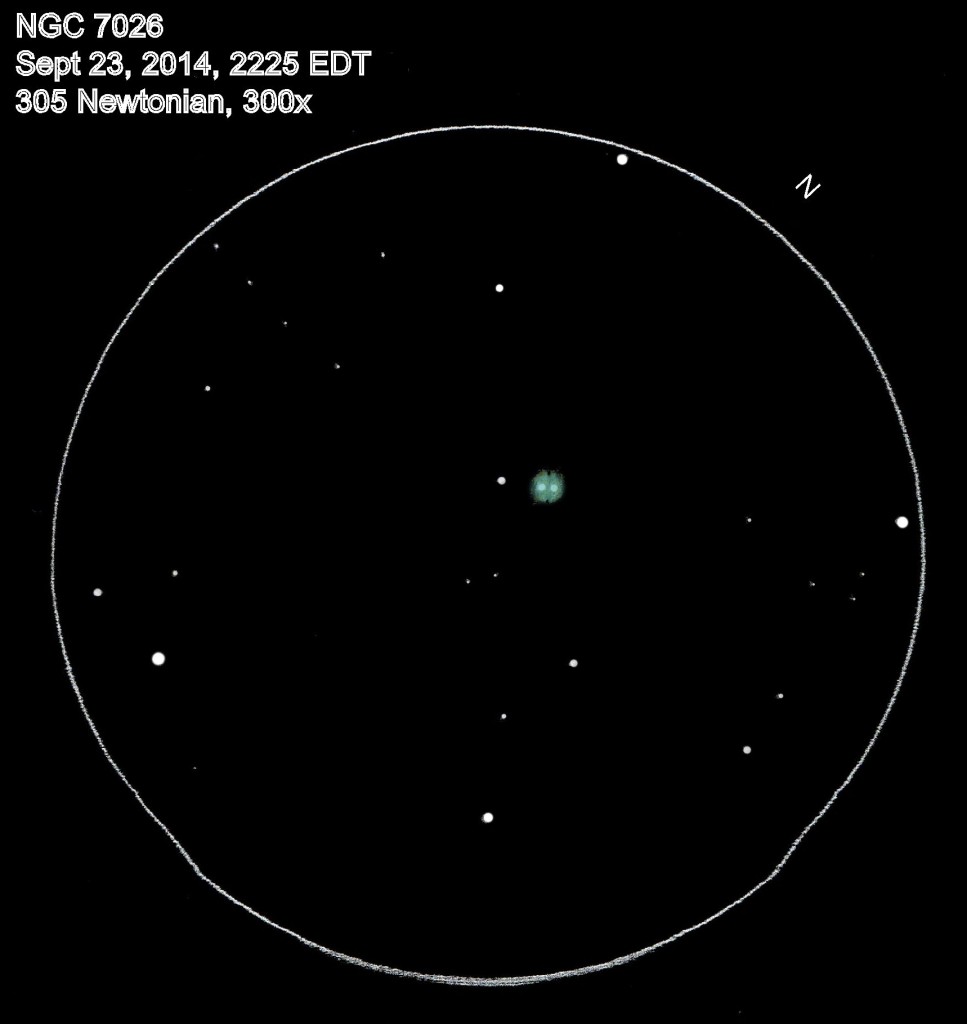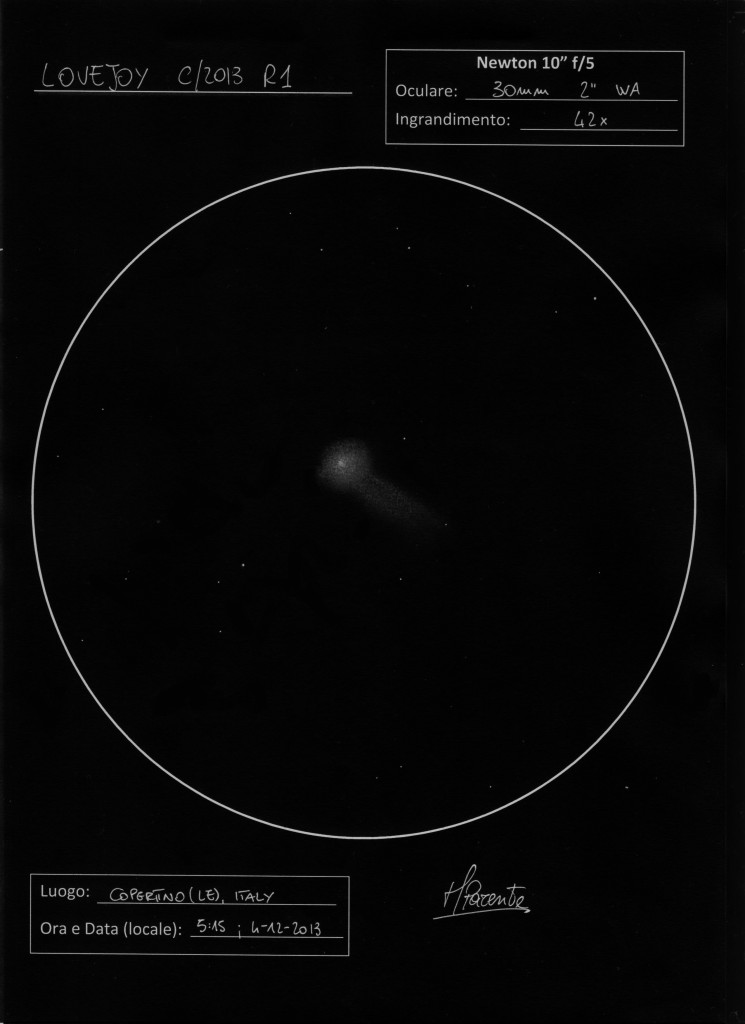
Hi Asod! Last night I woke up at 5.00am to observe Comet Lovejoy. I couldn’t see it with naked eye (I think because I observed from city), but it was very bright! I observed it at 90x and 42x and this was the best magnification; nucleus was very compact and more bright than tail. It’s the first comet I’ve ever seen, just wonderful!
Object Name: C/2013 R1 Lovejoy
Object Type: Comet
Location: Copertino (LE), Italy
Date: 4/12/2013
Media: Pencil on White Paper; inverted by Computer


